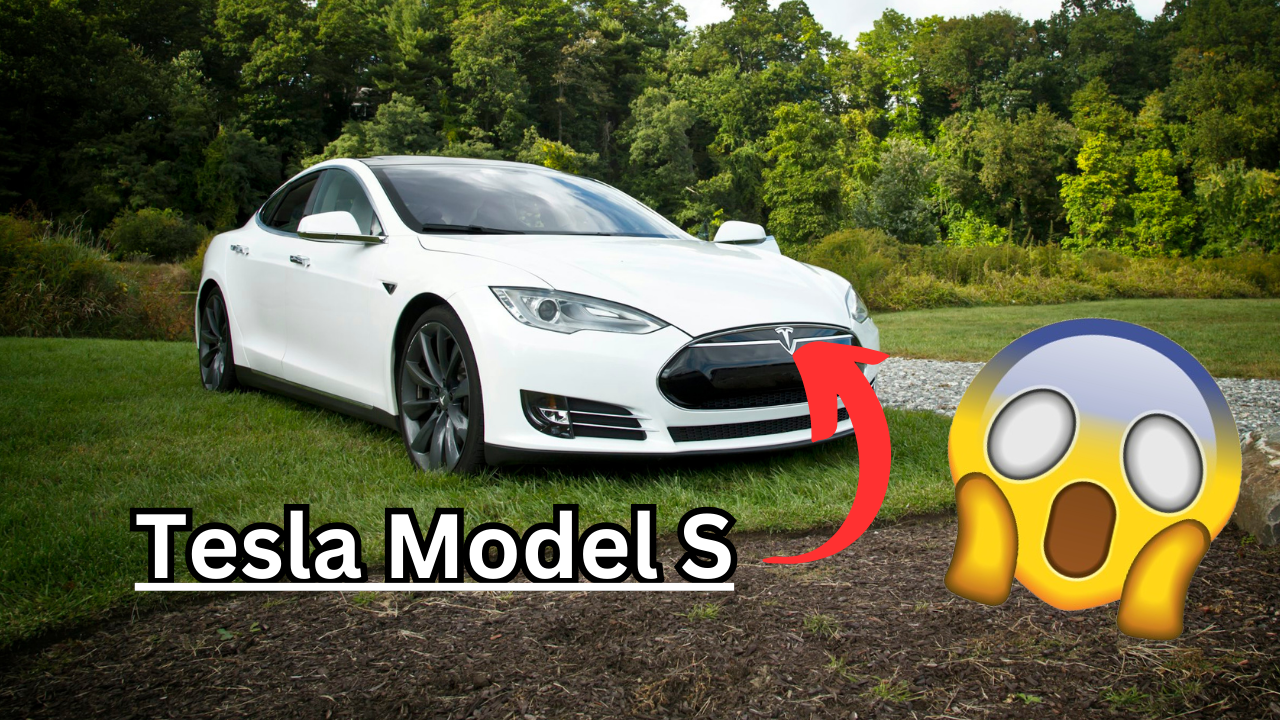In the world of high-performance automobiles, few brands carry the prestige and allure that Ferrari has cultivated over decades. The Ferrari F8 Tributo, with its blistering speed, roaring engine, and Italian craftsmanship, has long been considered one of the best sports cars on the market. However, an unexpected challenger is emerging in the form of the Tesla Model S, the all-electric sedan that has already disrupted the automotive industry with its innovative technology and high-performance capabilities. The Tesla Model S is now gearing up to go head-to-head with the Ferrari F8 Tributo in a thrilling new open challenge, signaling a potential shift in the landscape of luxury sports cars.
The Rise of the Tesla Model S: Innovation Meets Performance
Since its debut in 2012, the Tesla Model S has been at the forefront of the electric vehicle (EV) revolution. Unlike many traditional automakers who were initially hesitant to embrace electric powertrains, Tesla boldly introduced a luxury electric sedan that offered both impressive range and performance. Over the years, the Model S has evolved, with updates that have continuously pushed the boundaries of what an electric vehicle can achieve.
The latest iteration of the Model S, the Plaid version, has completely transformed the perception of what electric vehicles are capable of. With a tri-motor setup and an eye-watering 1,020 horsepower, the Tesla Model S Plaid is capable of accelerating from 0 to 60 mph in under 2 seconds, making it one of the fastest production cars in the world. This unprecedented level of performance has earned it a spot among the upper echelons of automotive engineering, competing not just with electric rivals but with the best of traditional sports cars, including those from Ferrari.
Tesla’s focus on software and over-the-air updates has also allowed the Model S to remain ahead of the curve in terms of features and capabilities. The electric sedan boasts cutting-edge autonomous driving capabilities, a minimalist yet luxurious interior, and a range of over 390 miles on a single charge, setting it apart from gas-powered competitors.
The Ferrari F8 Tributo: A Supercar Icon
On the other side of the spectrum is the Ferrari F8 Tributo, a car that embodies the spirit of Italian performance and luxury. Ferrari, a brand synonymous with precision engineering, has always been at the pinnacle of high-performance sports cars. The F8 Tributo, introduced in 2019, takes the performance capabilities of the brand to new heights, combining the agility of a true sports car with the power of a turbocharged V8 engine.
With a 3.9-liter twin-turbocharged V8 engine producing 710 horsepower, the F8 Tributo can accelerate from 0 to 60 mph in just 2.9 seconds. It can reach a top speed of over 211 mph, positioning it among the fastest supercars in the world. The F8 Tributo is not only fast but also a masterpiece of design, with its aerodynamic lines, aggressive stance, and signature Ferrari details, making it a car that turns heads wherever it goes.
Ferrari’s commitment to producing an exhilarating driving experience is evident in the F8 Tributo’s chassis, suspension, and overall handling dynamics. It’s a car that begs to be driven hard on winding roads or at the track, offering a level of engagement and excitement that is hard to match. The sound of the engine alonethe unmistakable growl of Ferrari’s V8 adds to the drama and appeal of the driving experience, making the F8 Tributo a car that enthusiasts dream of owning.
The Tesla Model S Plaid vs. Ferrari F8 Tributo: A Clash of Worlds
At first glance, the Tesla Model S and the Ferrari F8 Tributo may seem to belong to entirely different categories of performance cars. One is an all-electric sedan, while the other is a gasoline-powered supercar. However, the Tesla Model S Plaid’s performance figures and the direction that the automotive industry is heading in terms of electrification have created an interesting and somewhat unconventional rivalry between the two.
The primary advantage the Ferrari F8 Tributo has is its engineering pedigree. Ferrari has spent decades perfecting the art of creating high-performance machines that engage the driver in ways few cars can. Its lightweight construction, aerodynamics, and V8 engine provide a driving experience that is pure and visceral. For enthusiasts, the F8 Tributo represents the pinnacle of automotive performance intensely focused on track-ready speed and raw driving pleasure.
In contrast, the Tesla Model S Plaid takes a more modern approach to performance, offering a different kind of thrill. The immediacy of electric power delivery instant torque at any speed combined with the unparalleled acceleration of the Plaid version creates a level of performance that is simply mind-boggling. The Tesla doesn’t rely on the same mechanical complexity as the Ferrari, and yet it can outperform traditional supercars in terms of straight-line speed, with a 0-60 mph time of under 2 seconds.
While the Ferrari F8 Tributo relies on a symphony of mechanical components to deliver its power, the Tesla Model S Plaid uses its dual electric motors and advanced battery technology to provide acceleration and top-end speed. The difference in driving experience is likely to be a major talking point between fans of each brand. The Ferrari’s naturally aspirated engine offers a thrilling sound, while the Tesla’s near-silent electric motors might leave some enthusiasts yearning for a more traditional engine note.
The Challenge: What’s at Stake?
The open challenge between the Tesla Model S Plaid and the Ferrari F8 Tributo is symbolic of the broader shift in the automotive landscape. As the world moves toward greater electrification, many high-performance sports car manufacturers are facing the challenge of keeping up with the rapidly advancing electric technology. Tesla’s ability to combine cutting-edge electric propulsion with unmatched speed has forced traditional brands to rethink their approach to performance.
Ferrari, historically resistant to embracing fully electric technology, has already begun to take steps in the direction of hybrid and electric vehicles. The Ferrari SF90 Stradale, for example, is a hybrid supercar that combines a V8 engine with three electric motors, giving it an impressive total output of 986 horsepower. However, the company has not yet fully committed to an all-electric model, making the Tesla Model S a direct challenge to Ferrari’s longstanding dominance in the high-performance car market.
For Tesla, this challenge is an opportunity to prove that electric cars can not only match but surpass the performance of traditional gasoline-powered vehicles in the luxury and sports car categories. The Model S Plaid represents the epitome of Tesla’s performance capabilities, and a head-to-head challenge with the Ferrari F8 Tributo could solidify Tesla’s position as a legitimate contender in the realm of high-performance automobiles.
The Future of the Electric Sports Car
While the Tesla Model S Plaid vs. Ferrari F8 Tributo challenge is set to turn heads, it is only the beginning of a larger movement in the automotive world. As more manufacturers race to develop high-performance electric vehicles, the performance gap between electric and gasoline-powered cars will continue to shrink. The days of dismissing electric cars as “not real sports cars” are quickly fading as models like the Tesla Model S Plaid prove that electric power can rival the best.
Furthermore, advancements in battery technology, lightweight materials, and electric motor efficiency will only improve, allowing electric vehicles to further close the gap in areas like range, weight distribution, and handling. Tesla’s focus on over-the-air software updates could also lead to improvements in performance and features over time, further enhancing the Model S’s appeal.
For Ferrari and other manufacturers of luxury sports cars, the rise of electric vehicles presents both a challenge and an opportunity. Companies that are quick to adapt to the growing demand for electrification will likely thrive, while those that resist may find themselves at a disadvantage in an increasingly electric future.
Conclusion: A New Era of Performance
As the Tesla Model S Plaid challenges the Ferrari F8 Tributo, it marks a pivotal moment in the evolution of performance cars. The competition between electric and gasoline-powered vehicles is no longer just a theoretical debateit is becoming a reality, with electric cars proving their worth in the high-performance arena. While Ferrari’s legacy as a maker of thrilling, high-revving sports cars is secure, the Tesla Model S Plaid is redefining what is possible in the world of speed, performance, and innovation.
Ultimately, the real winner in this open challenge may be the consumer. With automakers being forced to innovate and compete at the highest level, it’s clear that the future of performance vehicles is bright and electric. Whether it’s the Ferrari F8 Tributo’s roaring V8 or the Tesla Model S Plaid’s silent, blistering acceleration, both vehicles represent the pinnacle of automotive engineering, pushing the limits of what we expect from the cars of tomorrow.













